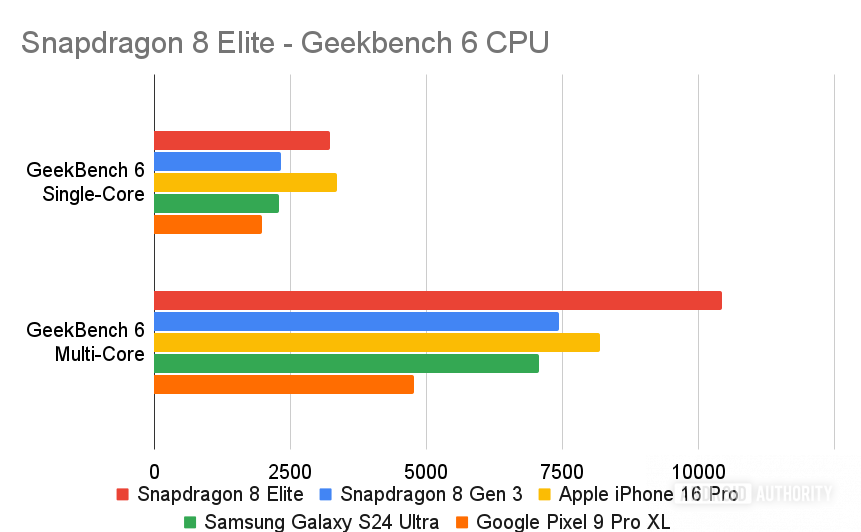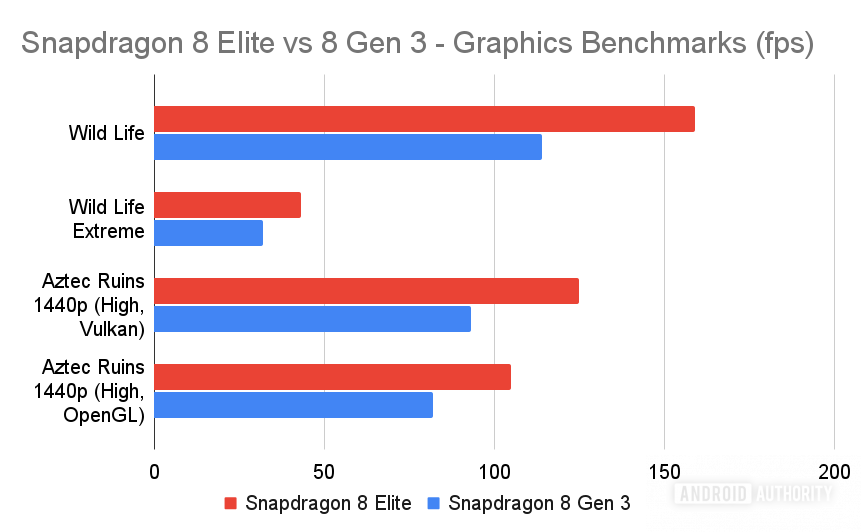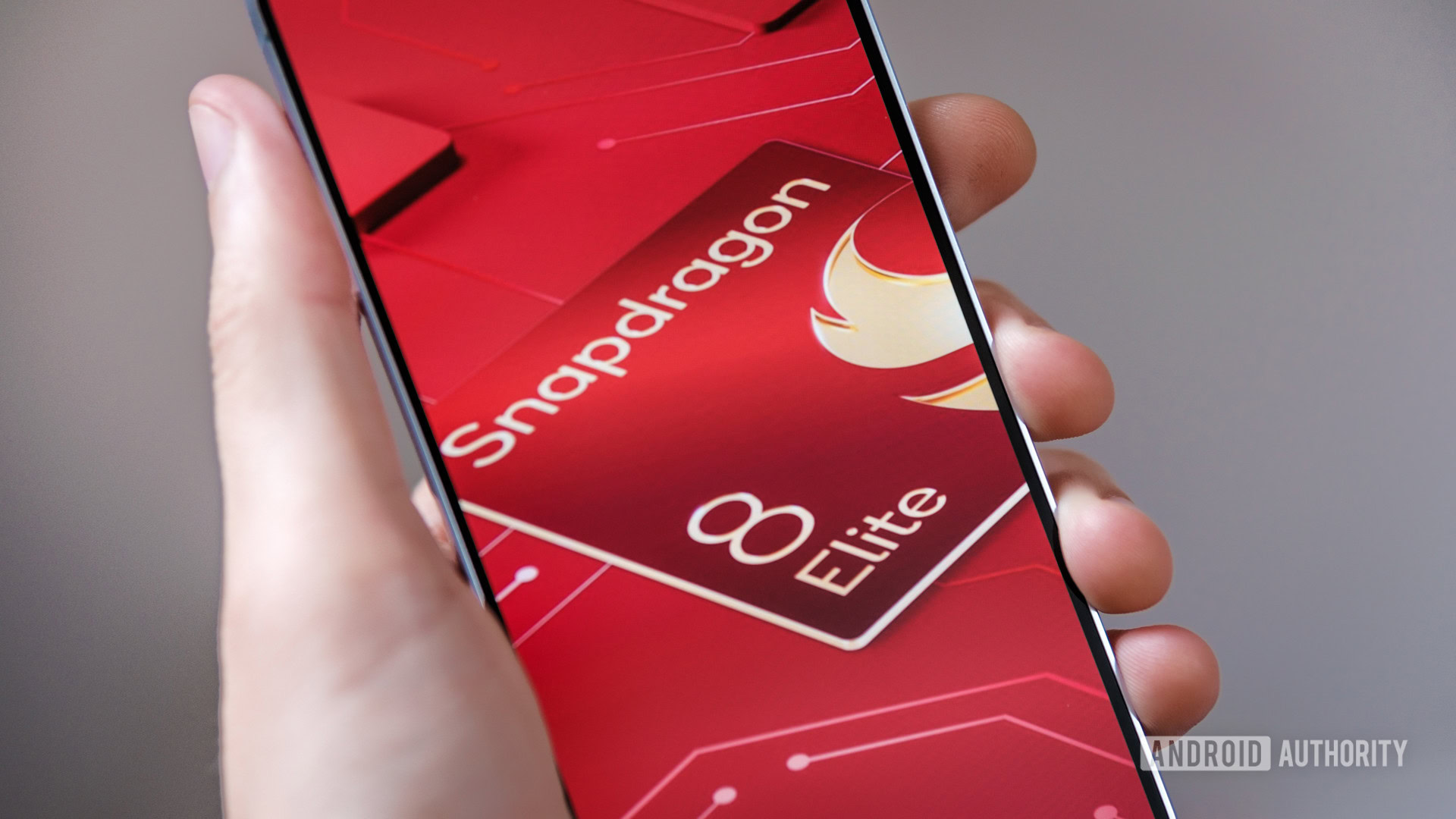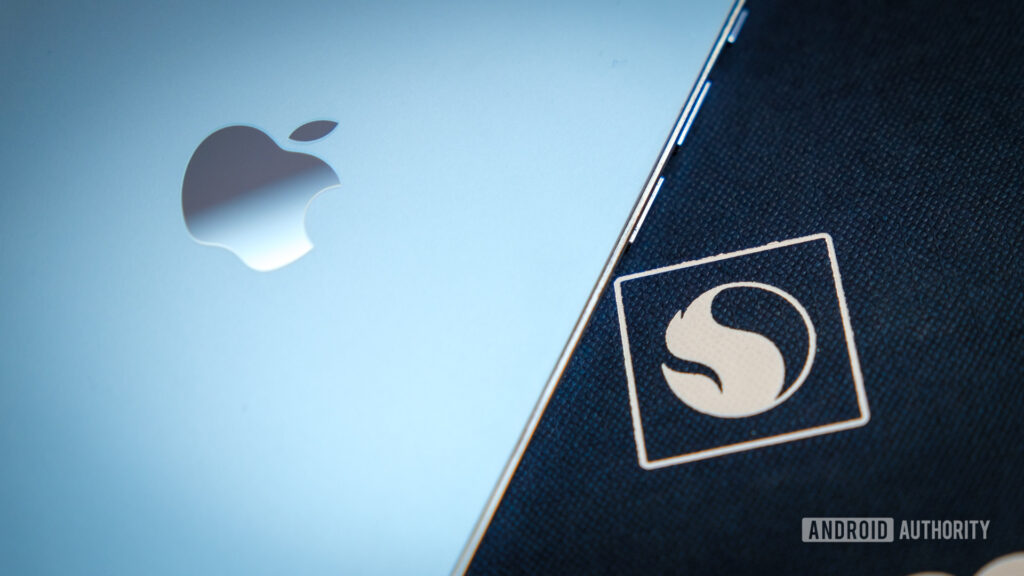Qualcomm’s next generation mobile processors are here. This looks like an absolute unit. Snapdragon 8 Elite features a return to custom CPU design, an all-new GPU architecture, and even snappier AI smarts. If you’re wondering how all this compares to today’s best smartphones, Qualcomm has provided some preliminary benchmark numbers.
Since retail smartphones are not yet available, Qualcomm benchmarked the chip on a reference smartphone. Its specs include a new Snapdragon 8 Elite chip with standard 4.32 GHz Prime and 3.53 GHz Performance CPU clock speeds. Paired with 24GB LPDDR5X RAM (4.8Gbps), 1TB UFS4.0 storage, and a 6.8-inch 144Hz AMOLED display, it’s pretty high-end stuff.
However, you need to be careful about this. For one, we haven’t seen Qualcomm’s numbers yet, but we’re hoping Snapdragon Summit will give us some hands-on time with these devices. Second, Qualcomm’s reference designs often outperform commercially available smartphones by several percentage points, so treat these as the absolute best-case scenario.
Snapdragon 8 Elite benchmark results
Let’s start with a new custom CPU. It still runs the Arm architecture, but eschews Arm’s Cortex CPU cores in favor of in-house designs. For comparison, Google and Samsung use Arm parts for Tensor and Exynos, respectively, but Apple has an Arm license to design its own cores.
Speaking of Apple, let’s see if Qualcomm’s design can outperform the current CPU market leader.

Qualcomm’s Oryon CPU and Apple’s largest CPU core in the A18 Pro are effectively neck and neck. The deficit with Apple’s cores is calculated to be less than 4%, and both are clearly much faster than other CPUs currently on the market, at least in terms of single-core performance. For example, the 8 Elite is 63% faster than the Google Pixel 9’s Tensor G4 processor.
However, Qualcomm’s Prime core achieves this with an impressive clock speed of 4.32 GHz, while Apple’s seems to peak at 4.05 GHz. You need to check which one is more power efficient.
Qualcomm’s Oryon CPU takes on Apple’s custom design.
When it comes to multi-threaded workloads, the Snapdragon 8 Elite’s six performance cores outperform Apple’s four efficiency cores. The gap is quite significant at 27%. However, Qualcomm has two additional cores compared to Apple. On a core-by-core basis, Oryon appears to be around 4.5% slower than the A18 Pro’s cores, but just outside the margin of error.
More broadly, it’s 40% faster than the Galaxy S24 Ultra’s Snapdragon 8 Gen 3 and more than twice as fast as Google’s Tensor G4. The Snapdragon 8 Elite is shaping up to be something of a game-changer for Android smartphones, assuming you actually use that extra performance.
Do Qualcomm’s graphics claims stack up?
Qualcomm provides graphics benchmark results from “off-screen” tests, bypassing the display specifications of reference devices. While this is useful for chip-to-chip comparisons, it’s not very useful for actual devices that you regularly test. So we tracked data from a Snapdragon 8 Gen 3 reference unit to see how it compares, and the results are very solid.

3DMark’s Wild Life test shows Qualcomm’s performance improved by 40% compared to Snapdragon 8 Gen 3 manifest. This suggests that this chip is completely overkill for the majority of modern mobile titles and can handle even cutting-edge games with high frame rates.
When it comes to the most demanding graphics benchmarks with cutting-edge graphics effects, the new GPU is around 34% faster, which is still an impressive improvement for a generation. OpenGL performance doesn’t seem to have improved much, but it’s still solid, showing a 28% improvement over last year on the Aztec ruins high-rise.
Graphics performance has also been significantly improved.
Qualcomm doesn’t provide any ray-tracing benchmarks to support its claim of 35% higher performance. There are also no stress test results to see if the 8 Elite can overcome the previous generation’s Achilles heel. We’ll definitely be running these tests ourselves once we get hands-on with an Elite-powered smartphone.
Initial evaluation of Snapdragon 8 Elite performance

Robert Triggs / Android Authority
We also compared Qualcomm’s AI performance numbers. Depending on the workload, performance improvements were shown between 30% and 111% compared to last year. However, AI workloads are highly variable, so we don’t want to focus too much on these numbers at this stage.
Of course, there are only so many conclusions you can draw from benchmarks you haven’t run yourself, but Qualcomm clearly seems confident in the Snapdragon 8 Elite’s capabilities.
You won’t have to wait long to see the Snapdragon 8 Elite in action.
If these results are translated into commercial smartphones, we will see significant improvements in CPU and GPU performance across generations. 20% is a more traditional year-over-year increase, but with an increase closer to 40%, consumers will notice a more noticeable difference in responsiveness in the most demanding apps and games.
Perhaps the biggest takeaway is that the next generation of Android smartphones finally looks ready to leapfrog Apple. Snapdragon has trailed in multi-core performance and won in graphics in recent generations, but the arrival of the Snapdragon 8 Elite looks set to take Android smartphones to the top of the charts by a considerable margin. .


